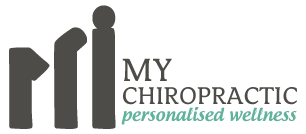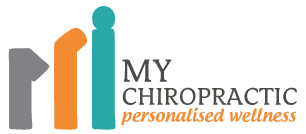Navigating change and transition
As the season changes and the picturesque setting of falling golden leaves frame the clinic, there seems to be a natural calling to check in with changes in oneself too. The changes which you are actively choosing, as well as those that are seemingly choosing you.
A great question to ask yourself here is what changes have been pending in my life, or perhaps are already in motion, and require more of my attention before I will actualise what I want?
It is an undeniable fact that change is a naturally occurring part of life. All elements of life are in motion and nothing is permanent. From this truth, you can choose to hold one of two positions. You may choose to stand rigid, refusing to acknowledge the change of season until a time where the chill becomes chronically problematic and the acknowledgement is forced. Alternatively, you may actively position yourself to embrace change and it’s opportunities, dancing with the golden leaves and influencing their trail as they fall.
The most powerful models of change and transition encompass a truly holistic approach. We can apply this to any area of life, and this is especially true for health, looking at the physical body, the mind, nutrition, sleep, relationships, and environments.
Below is an empowering model for navigating transition and growth. I encourage you to take a pen and some clean sheets of paper. Surrender to the process of tuning into what is sitting underneath the mind chatter waiting to be heard. Explore beyond the self talk, feel deeper into what the heart and gut has to say, and trust what surfaces.
1. ACKNOWLEDGEMENT:
Powerful shifts happen from the simple practice of allowing yourself to acknowledge the experience you are in. It allows self awareness to foster, which is essential for all true change. If you refuse to acknowledge the expiry date of a behavioural or thought pattern, you are destined to create a future that is, you know, mouldy and undesirable.
What does this mean:
This means that you choose to become unapologetically honest. It means you give yourself permission to be exactly as you are right now, surrendering without creating diversions, distractions, or manipulations. You can become the observer of what is happening, rather than forcefully avoiding or denying it.
How and what steps do I take:
Answer these questions. Be honest and don’t leave anything out:
- What is not working for me right now?
- What emotions am I feeling right now?
- What thoughts am I thinking right now?
- What is contributing to the above thoughts and emotions?
- What is important to me, and where am I running behaviours that sabotage these things?
2. DEFINE THE PURPOSE:
Answer these questions:
- For what purpose do I want this outcome?
- What specifically do I want from this transition?
- Why is that important to me?
3. CREATE SPACE AND RESOURCES:
Now that you have the answers to the above questions, you also have a detailed analysis of what isn’t working for you. This information is golden in discovering what you need to do instead. Create space in your week to process the different elements of this transition and draw on resources to facilitate change. This discovery process takes time and effort.
What does this mean:
This means blocking out dedicated time in your week to discover your needs. Empower yourself with resources that will assist you in understanding yourself and what you want from your situation.
How and what steps do I take:
- Set the allocated time for this process and honour it
- Implement mindfulness habits that encourage creative thinking. For example, time in nature, quality sleep, meditation or self hypnosis, exercise, new environments.
- Uncover research or people who have already achieved what you are looking to do. This may be through podcasts, YouTube, blogs, books, asking friends, family or members of the community, or joining different groups.
- Answer these questions
- What am I unsure of that I need to find out?
- What skill do I need to develop to take me into the next season?
- What decisions do I need to make now and in the upcoming seasons?
- Who can I speak to for guidance or support?
- What resources are going to best educate me?
4. CRAFT THE PATH
At this stage you’ve now acknowledged your situation and it’s need for change. You’ve identified what you want to achieve from the transition, and you’ve allocated time and effort to become informed of your future opportunities. It’s now time to make a decision and commence the action steps that will see your decision fulfilled.
What does this mean:
This means choosing courage and bravery. This means trusting your intuition or unconscious mind, which is the part of you that knows deep down (sometimes in your heart or your gut) what you need to do. This can also mean feeling the fear and doing it anyway. Martin Luther King put this eloquently by saying “you don’t have to see the whole staircase you just have to take the first step”. It’s time to let go, step outside of your comfort zone, and take action.
Something we know for sure is that if nothing changes, then nothing changes. Trust yourself to create ripples of change that will deliver feedback of ‘where to next’. When you take action the wheels of momentum begin to slowly roll. You’ve then created the opportunity to choose to see the evidence of positive change. When you see that evidence, your belief connects, strengthens, and it’s full steam ahead!
How and what steps do I take:
Ask these questions and action the answer:
- What feels closest to the next best step? What is closest to feeling right or true for me?
- What do I need to do that I don’t want to do?
- What do I not want to do that I must?
5. BEHAVIOURAL FLEXIBILITY
Almost without exception there will be obstacles along the path. The person with the most flexibility in both their behaviour and how they respond to a situation will always come out on top. This one is an art with endless rewards when mastered.
What does this mean:
Here it is; this means having awareness and clarity of the outcome you want and simultaneously taking action to create that, whilst also allowing it to unfold in whatever way nature deems necessary. Behavioural flexibility is therefore powerful in diffusing any pain or suffering that may otherwise be experienced from attachment to how an outcome ‘should’ look or be delivered.
How and what steps do I take:
- Pivot and open your mind
- Be creative with your thinking
- Acknowledge that a stage of life is only your final destination when YOU choose for it to be so
- Answer these questions:
- What is there to learn and gain from this?
- How can this help me to move forwards?
- What skills am I able to develop from this situation?
- How have other people proactively approached a similar situation?
- What one positive step can I take to resolve this obstacle?
- Who can I reach out to for guidance and support?
6. KINDNESS
This applies to yourself and to others. As Maya Angelou perfectly said; “do the best you can until you know better, and then do better”. Therefore, if you are doing everything you know how and taking consistent action to learn more, you are already doing it perfectly.
What does this mean:
Make nice with feeling uncertain or uncomfortable, it’s not forever it’s just for now and it’s beautiful confirmation that you are stepping up to your optimum existence.
How and what steps do I take:
- Check what rules you have set for yourself around what does and does not constitute a ‘result’. For example, some days taking time to meditate or rest will be a powerful result. Other days it may be enforcing boundaries by saying ‘no’ to something or someone that isn’t right for you right now. All the steps along the way of choosing nutrient dense foods, an appropriate bed time, moving your body, and attending to physical imbalances in the body are all wonderful examples of results.
- Redefine what ‘hard’ means. When something is hard, this is beautiful evidence that you are creating a new pattern of thinking or behaviour. When you first train a new muscle at the gym, you don’t start by lifting 30kg or more. That can be where you eventually end up and excel, however there is a journey of building the muscle to get there first.
Written by Master NLP Practitioner and Hypnotherapist, Gemma Hanley.




Awesome read thanks Gemma! (& Marcus)-i will use this as my guiding light forward!-say “Hi” to Tamsyn for me, (and Mandy if she is still there)
Our pleasure Damian! See you soon 🙂